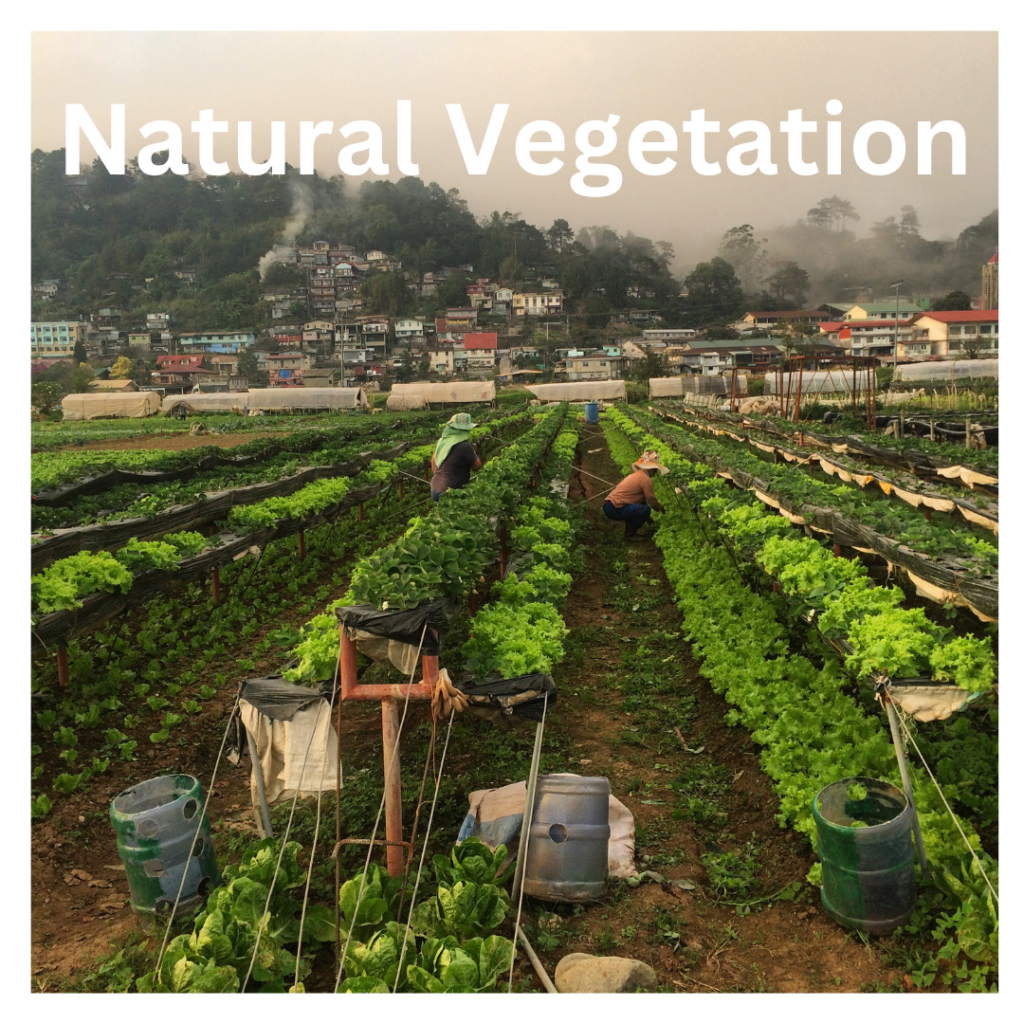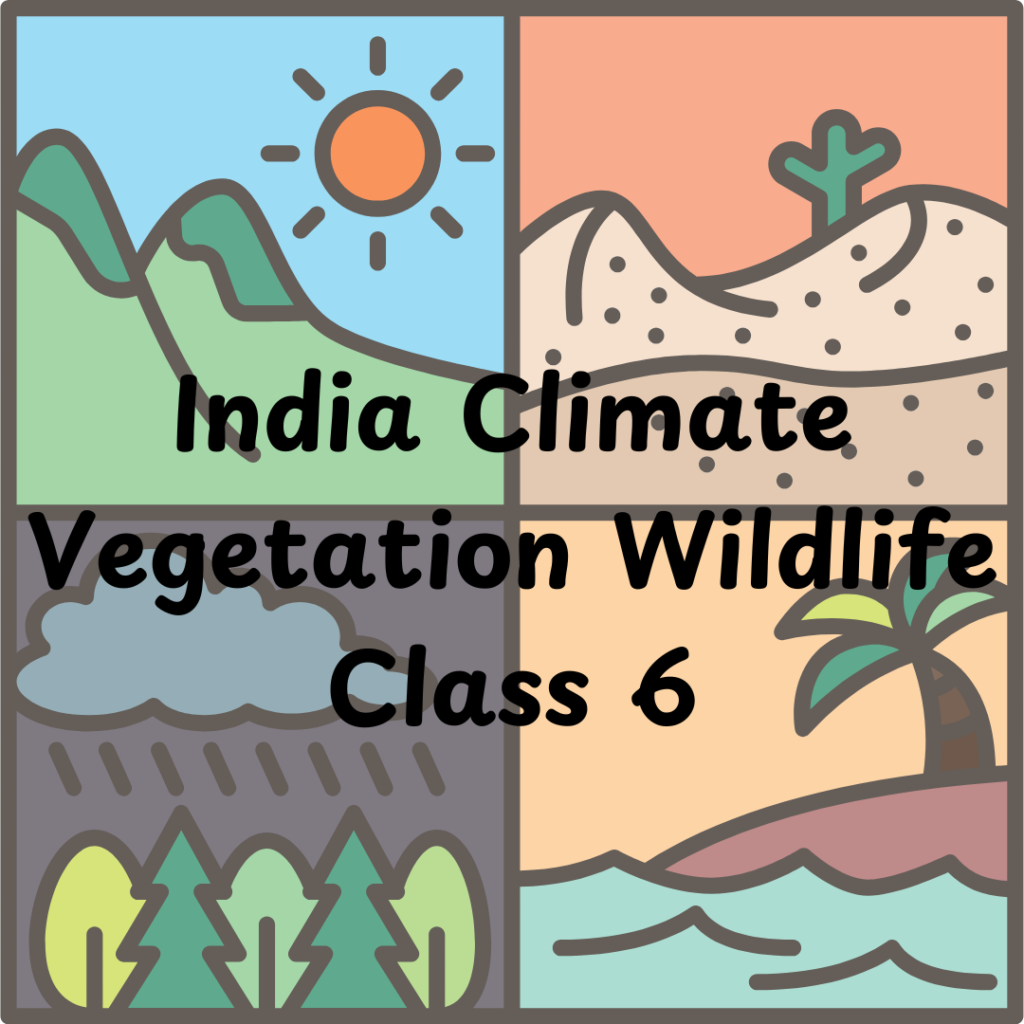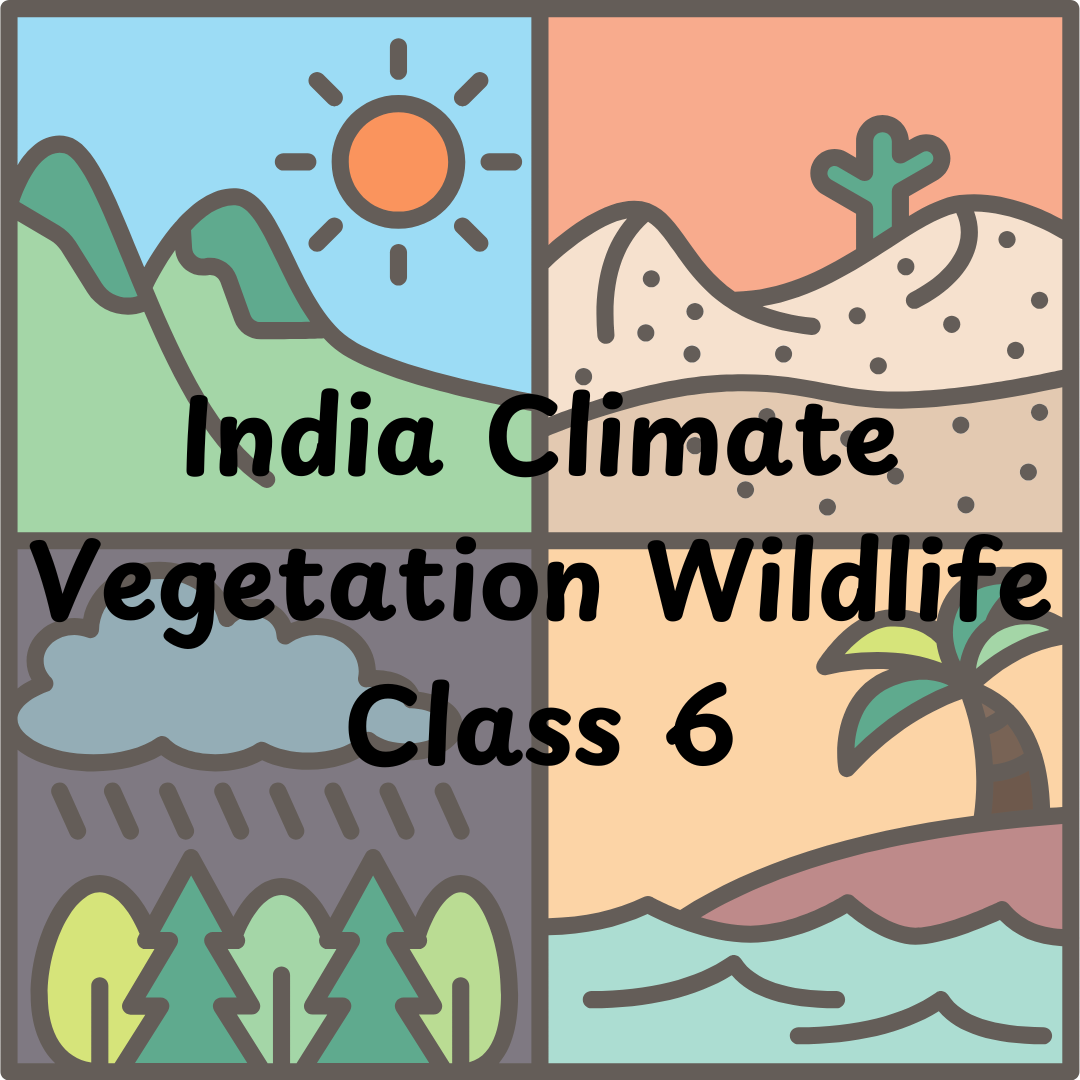India Climate Vegetation Wildlife Class 6 Explore detailed notes on India’s climate, natural vegetation, and wildlife for Class 6. Learn key points, textbook Q&A, and previous year questions for easy understanding.

Chapter 8: India – Climate, Vegetation, and Wildlife
India Climate Vegetation Wildlife Class 6
Table of Contents
Short Notes:
- India’s Climate:
- India experiences a monsoon climate.
- Major seasons: Summer, Rainy (Monsoon), Winter.
- Influenced by Himalayas and Thar Desert.
- Natural Vegetation:
- Types: Tropical Rainforests, Deciduous Forests, Thorny Bushes, Mountain Vegetation, Mangroves.
- Importance: Provides oxygen, supports wildlife, prevents soil erosion.
- Wildlife:
- India is home to diverse animals like tigers, elephants, and peacocks.
- Several wildlife sanctuaries and national parks protect species.
- Conservation Efforts:
- Government initiatives: Project Tiger, Project Elephant.
- Importance of afforestation and reducing deforestation.

Keynotes:
- Climate: India’s climate varies from region to region, influenced by its geographical diversity.
- Vegetation: Natural vegetation is classified based on climate and soil.
- Wildlife: Unique and endangered species are found in India, highlighting the need for conservation.
- Seasons: Summer (hot and dry), Monsoon (wet and humid), Winter (cold and dry).
Summary – Important Points to Remember:
- Climate:
- Hot summers, wet monsoons, and cool winters.
- Major influence: Himalayas block cold winds; monsoon winds bring rainfall.
- Vegetation Types:
- Tropical Rainforests: Found in areas with heavy rainfall (e.g., Western Ghats).
- Deciduous Forests: Shed leaves in dry seasons; found in central India.
- Thorny Bushes: Found in dry regions like Rajasthan.
- Mountain Vegetation: Found in the Himalayas; includes coniferous trees.
- Mangroves: Found in delta regions, e.g., Sundarbans.
- Wildlife Conservation:
- Important for maintaining ecological balance.
- National parks and sanctuaries play a vital role.
- Human Impact:
- Deforestation and pollution harm the environment.
- Awareness and government programs are essential for protection.

Textbook Questions and Answers:
- What are the main seasons in India?
- Answer: Summer, Rainy (Monsoon), and Winter.
- What are the types of natural vegetation in India?
- Answer: Tropical Rainforests, Deciduous Forests, Thorny Bushes, Mountain Vegetation, and Mangroves.
- Why is wildlife conservation important?
- Answer: To protect biodiversity, maintain ecological balance, and preserve endangered species.
- What are mangroves? Where are they found?
- Answer: Mangroves are salt-tolerant trees found in coastal areas, especially in the Sundarbans.
- Name two government programs for wildlife conservation.
- Answer: Project Tiger and Project Elephant.
Previous Year Questions:
- Describe the climatic features of India.
- India has a monsoon climate with distinct summer, rainy, and winter seasons.
- Mention the importance of forests.
- Forests provide oxygen, prevent soil erosion, support wildlife, and help in climate regulation.
- Explain the significance of wildlife sanctuaries.
- They protect endangered species and preserve natural habitats.
- What are deciduous forests? Give an example of where they are found.
- Deciduous forests shed leaves during dry seasons. Example: Central India.
Flowchart (Climate and Vegetation):
India’s Climate and Vegetation
- Climate:
- Summer (Hot) → Rainy (Monsoon) → Winter (Cold)
- Influenced by geographical features.
- Vegetation Types:
- Tropical Rainforests: Wet areas (e.g., Kerala, Andaman Islands).
- Deciduous Forests: Moderate rainfall (e.g., Madhya Pradesh).
- Thorny Bushes: Dry regions (e.g., Rajasthan).
- Mountain Vegetation: High altitudes (e.g., Himalayas).
- Mangroves: Coastal areas (e.g., Sundarbans).
What is the climate of India?
India’s climate is monsoonal, with three main seasons: summer, rainy, and winter.
What are the main types of vegetation in India?
The main types of vegetation in India include tropical rainforests, deciduous forests, thorny bushes, mountain vegetation, and mangroves.
Why is wildlife important in India?
Wildlife is important in India as it helps maintain ecological balance, supports biodiversity, and provides cultural and environmental benefits.
How does India’s climate affect its vegetation?
India’s diverse climate influences the types of vegetation, ranging from tropical rainforests in wet regions to thorny bushes in dry areas.
What efforts are taken for wildlife conservation in India?
India’s efforts include projects like Project Tiger, Project Elephant, and establishing wildlife sanctuaries and national parks.
Summary India Climate Vegetation Wildlife Class 6
India experiences a monsoon climate with three main seasons: summer, rainy, and winter. Its vegetation includes tropical rainforests, deciduous forests, thorny bushes, mountain vegetation, and mangroves. These support diverse wildlife like tigers, elephants, and peacocks, protected through initiatives like Project Tiger and Project Elephant. Conservation is crucial for ecological balance and biodiversity. Human activities like deforestation and pollution harm the environment, emphasizing the need for awareness and protective measures.
That’s all for India Climate Vegetation Wildlife Class 6.
for more articles like this you can our website : https://www.stationvidya.com/
You can follow us on Instagram: https://www.instagram.com/stationvidya/
Facebook: https://www.facebook.com/stationvidya/
You tube: https://www.youtube.com/@stationvidya/
We hope you’d loved the content , please do like, share and comment.
Subscribe for notification.
Environment and Sustainable Development Class 11

Leave a Reply